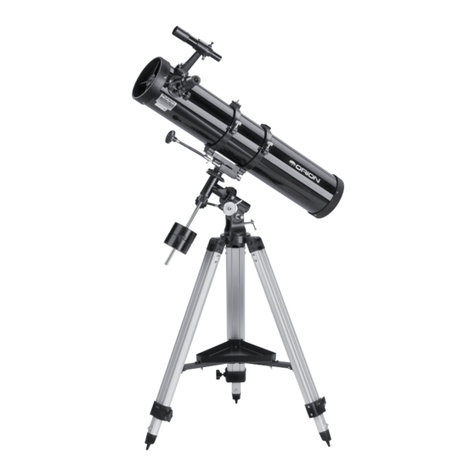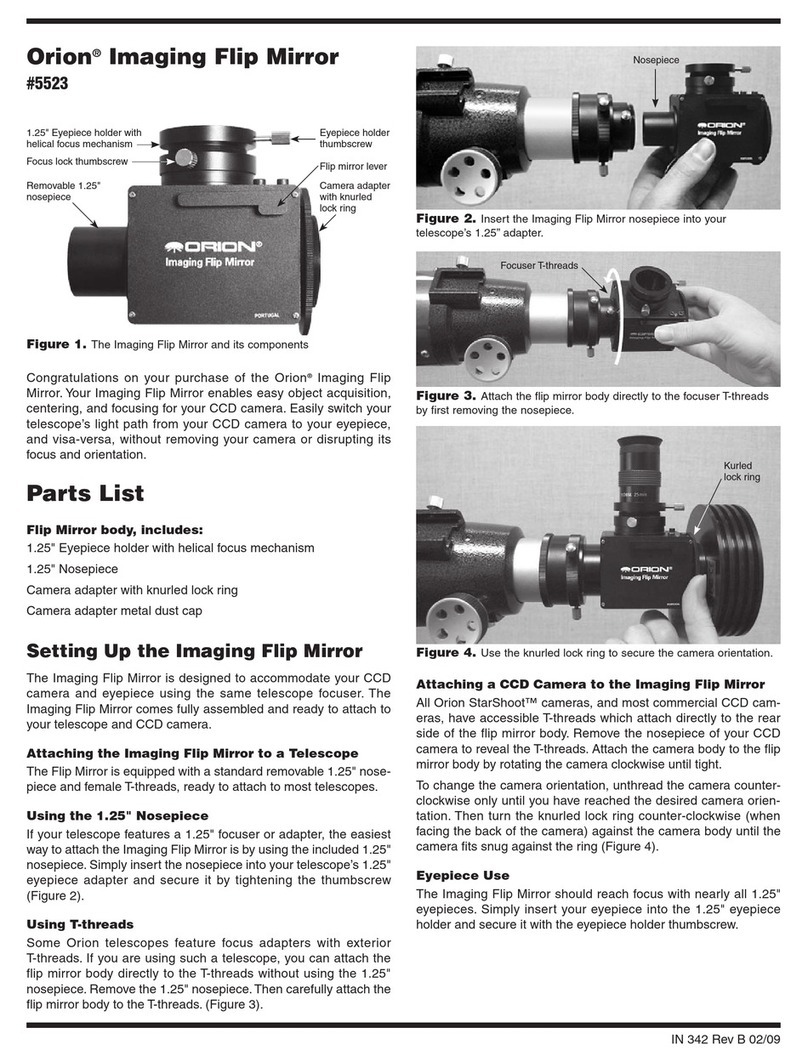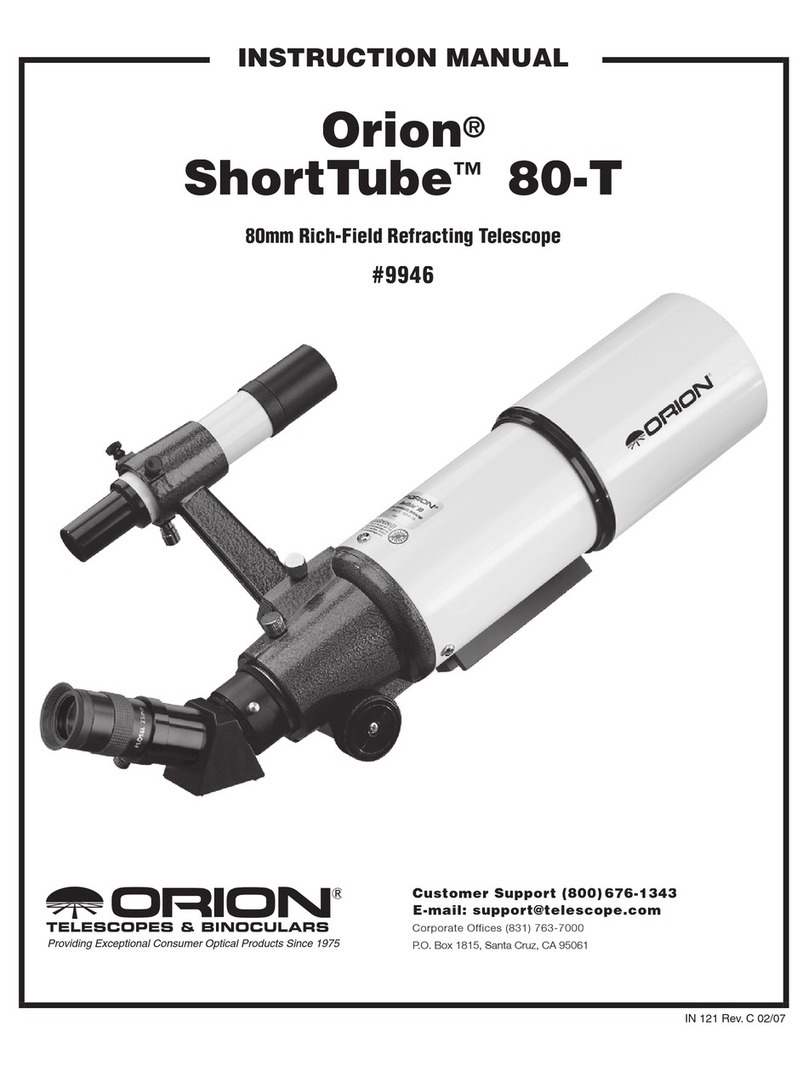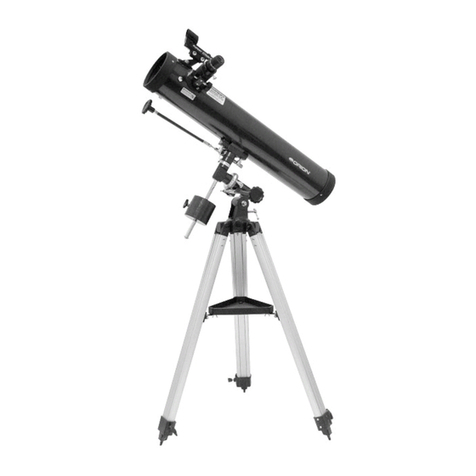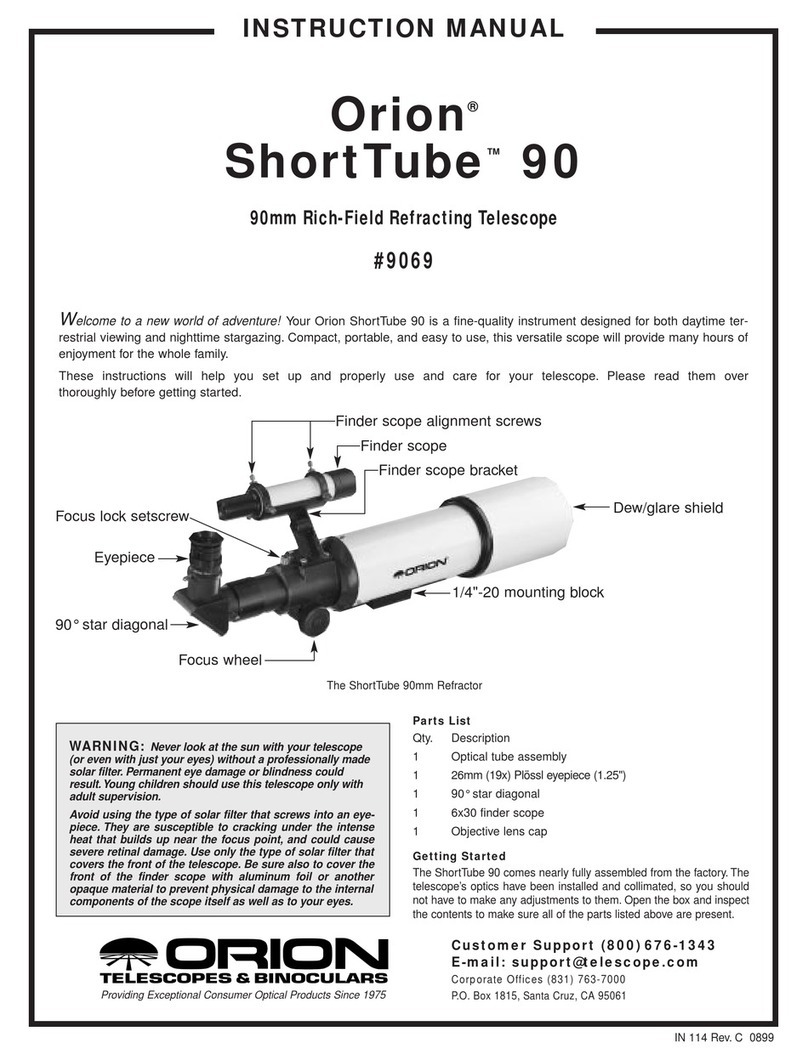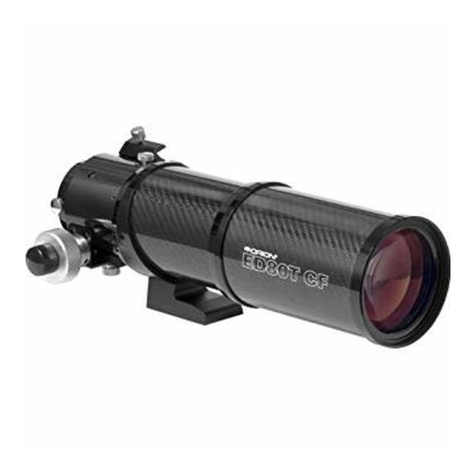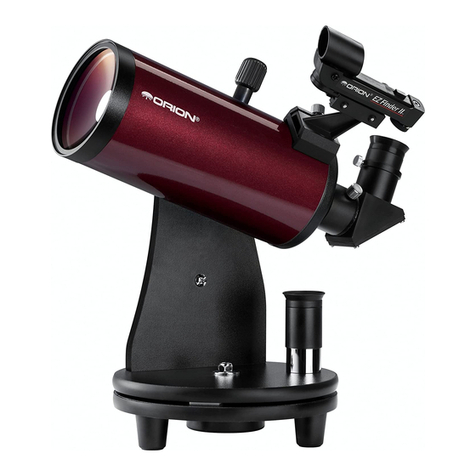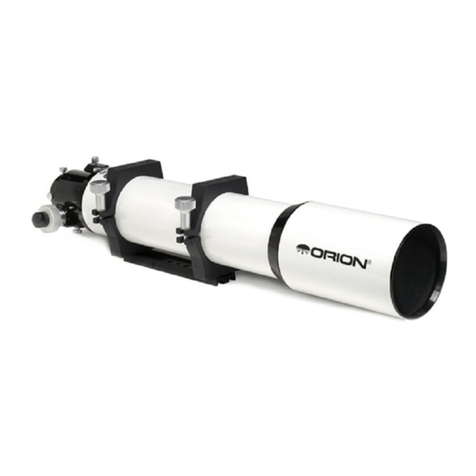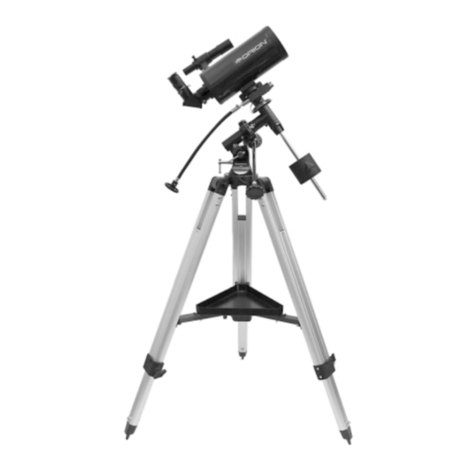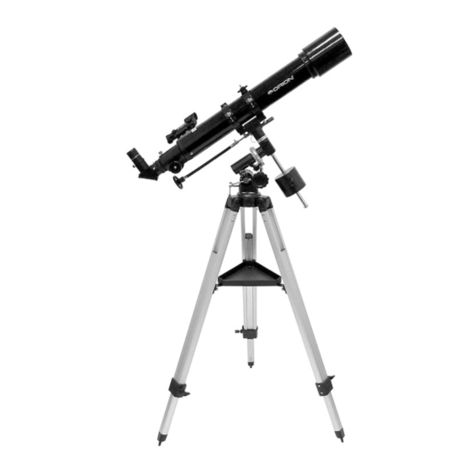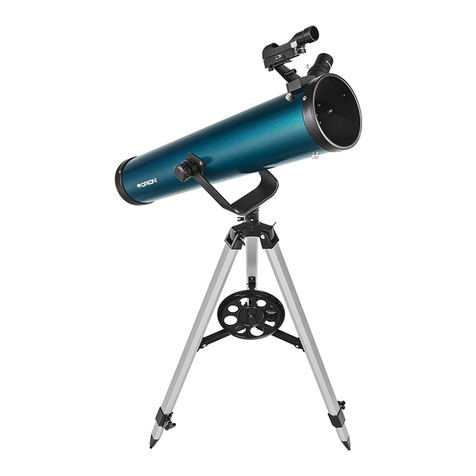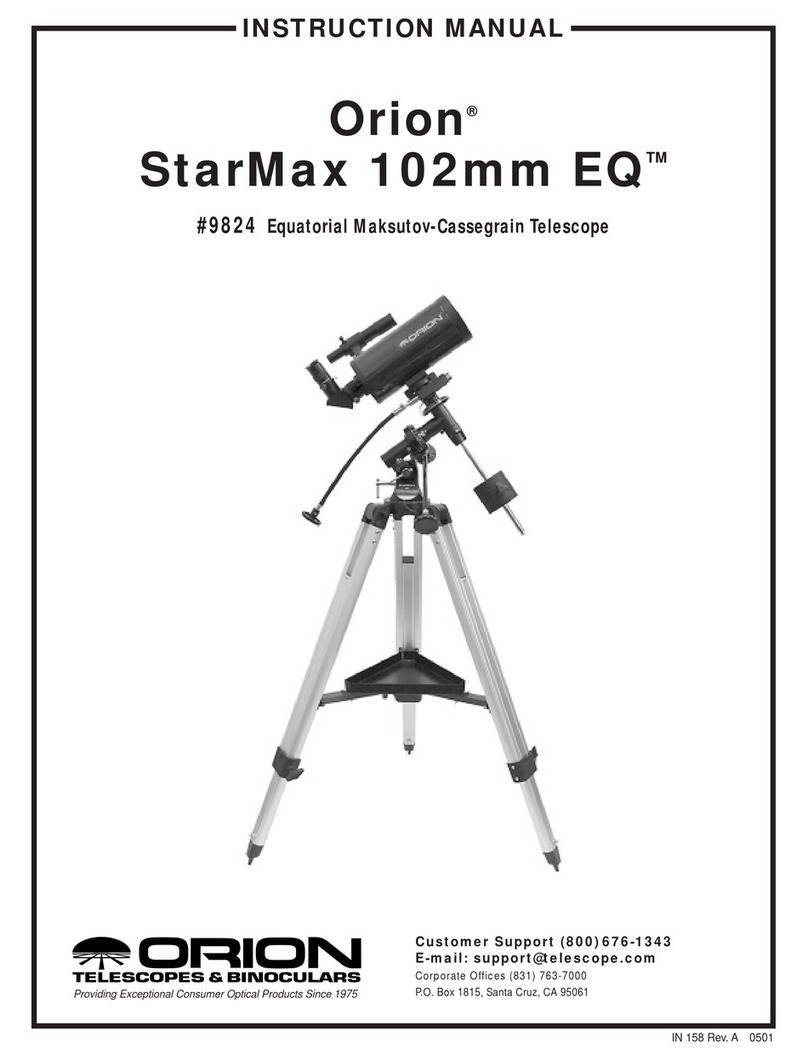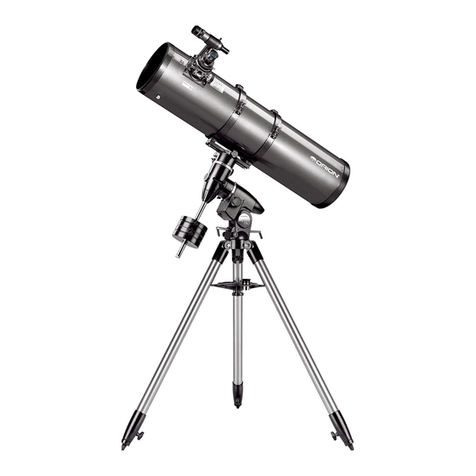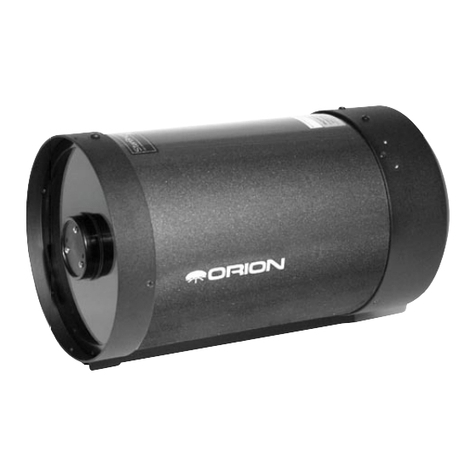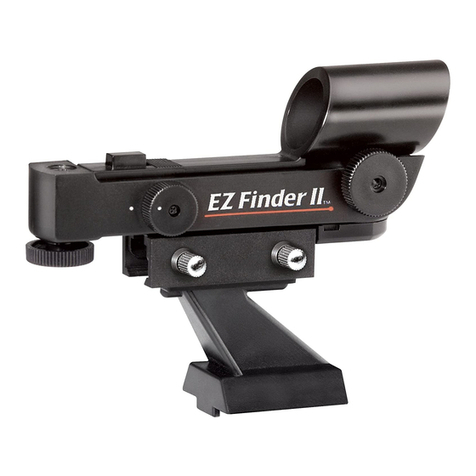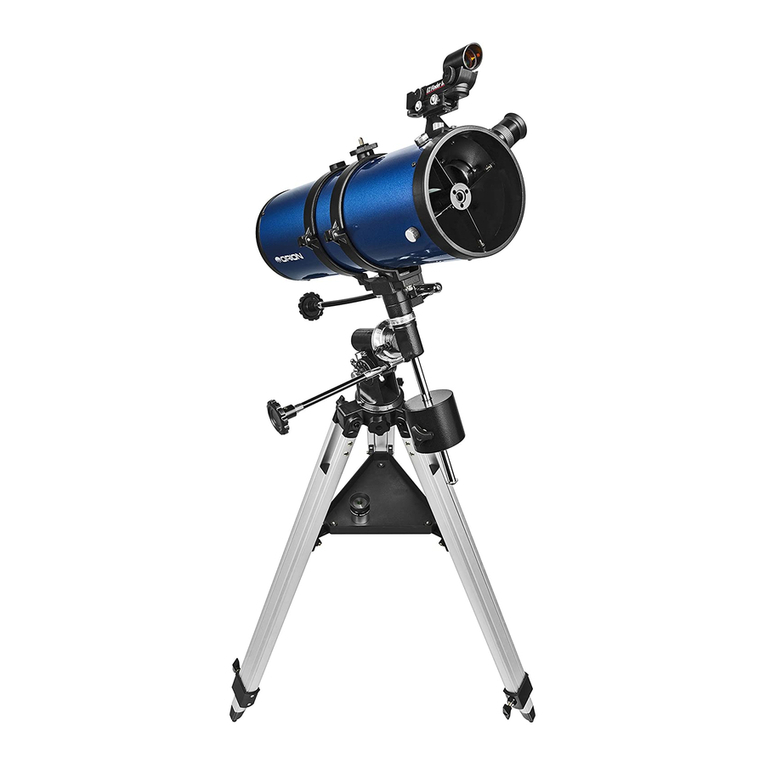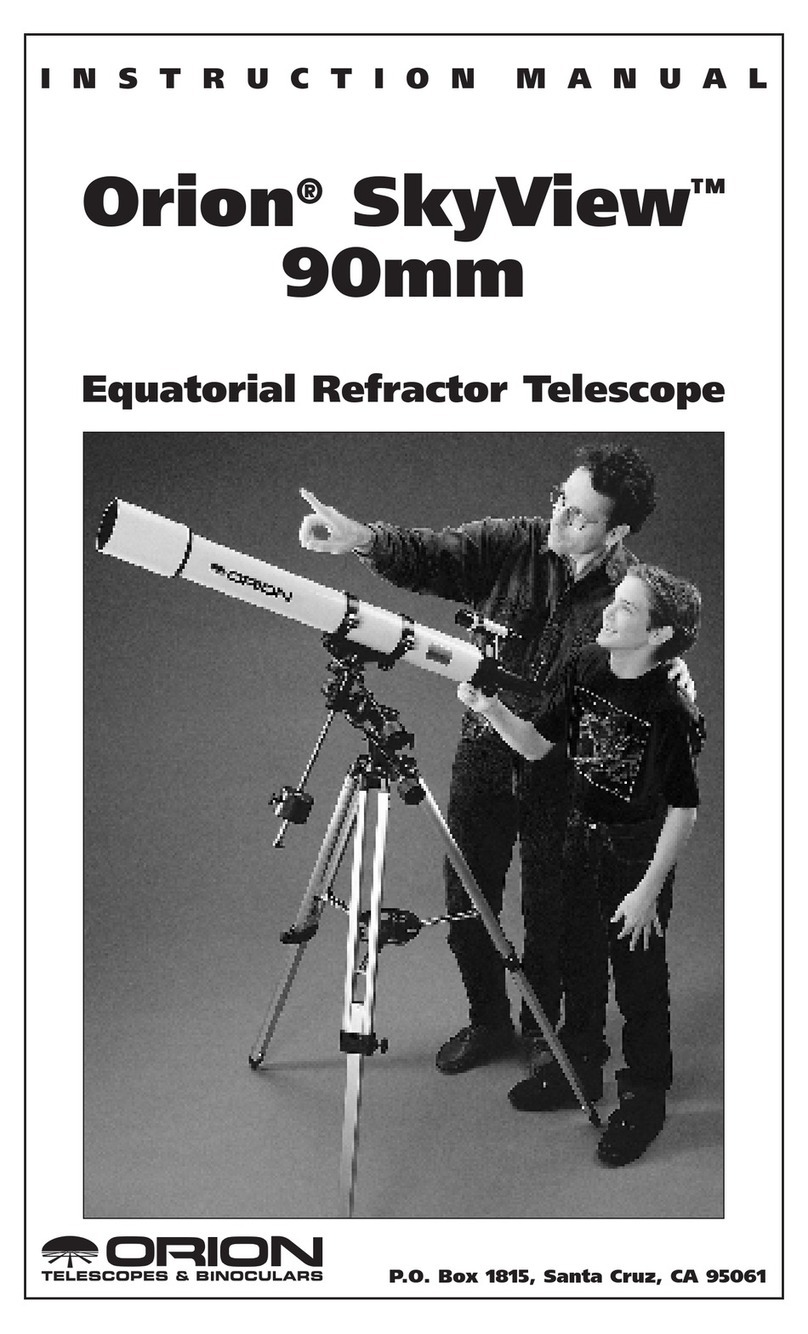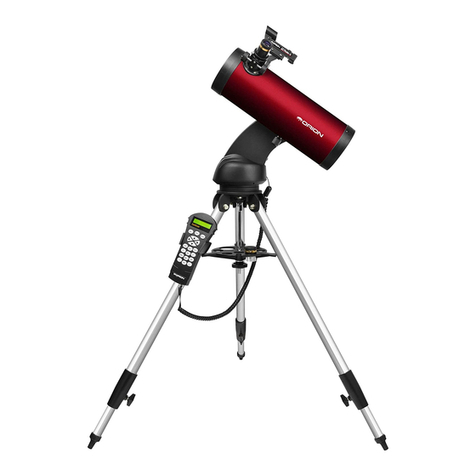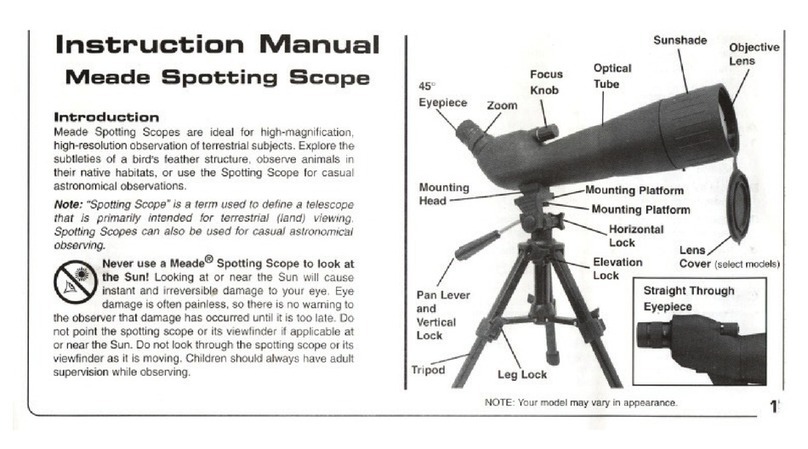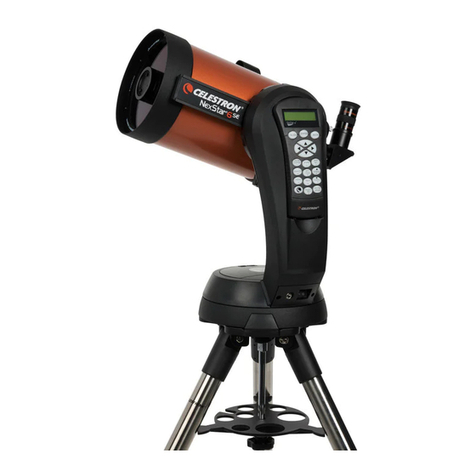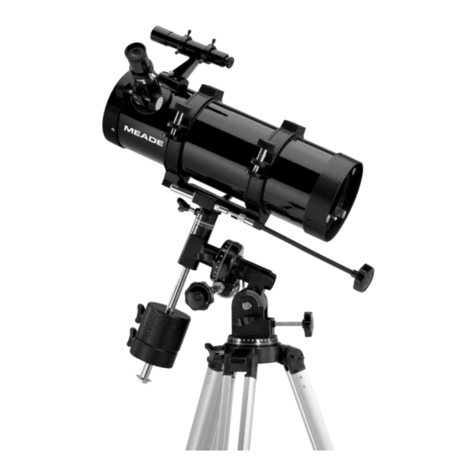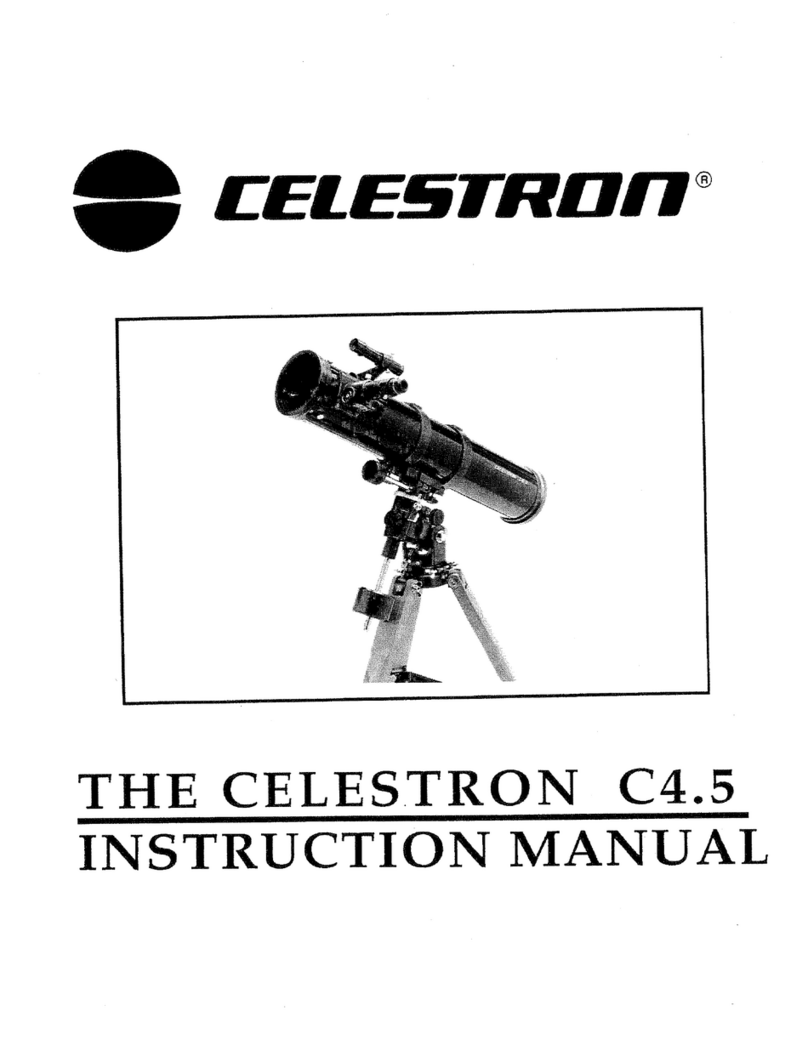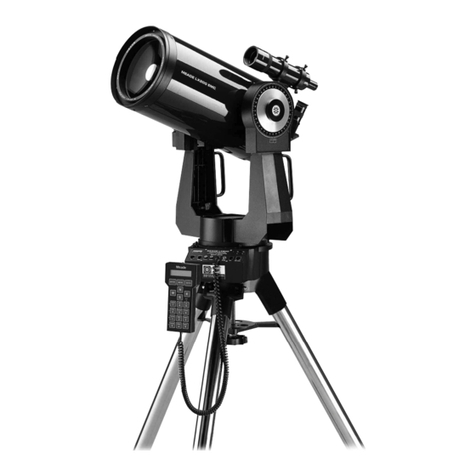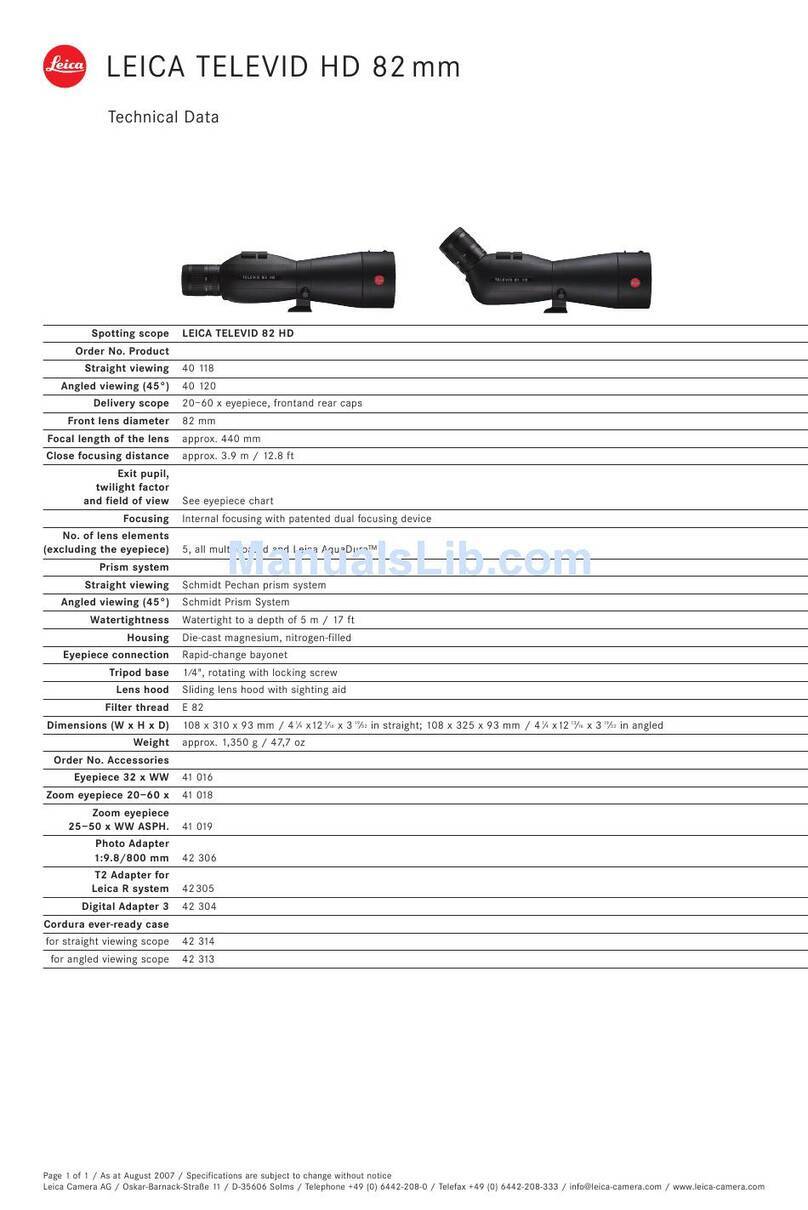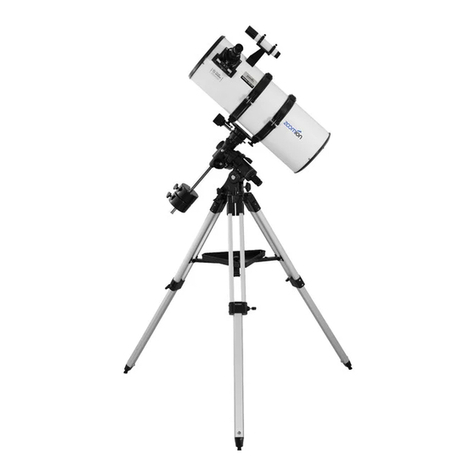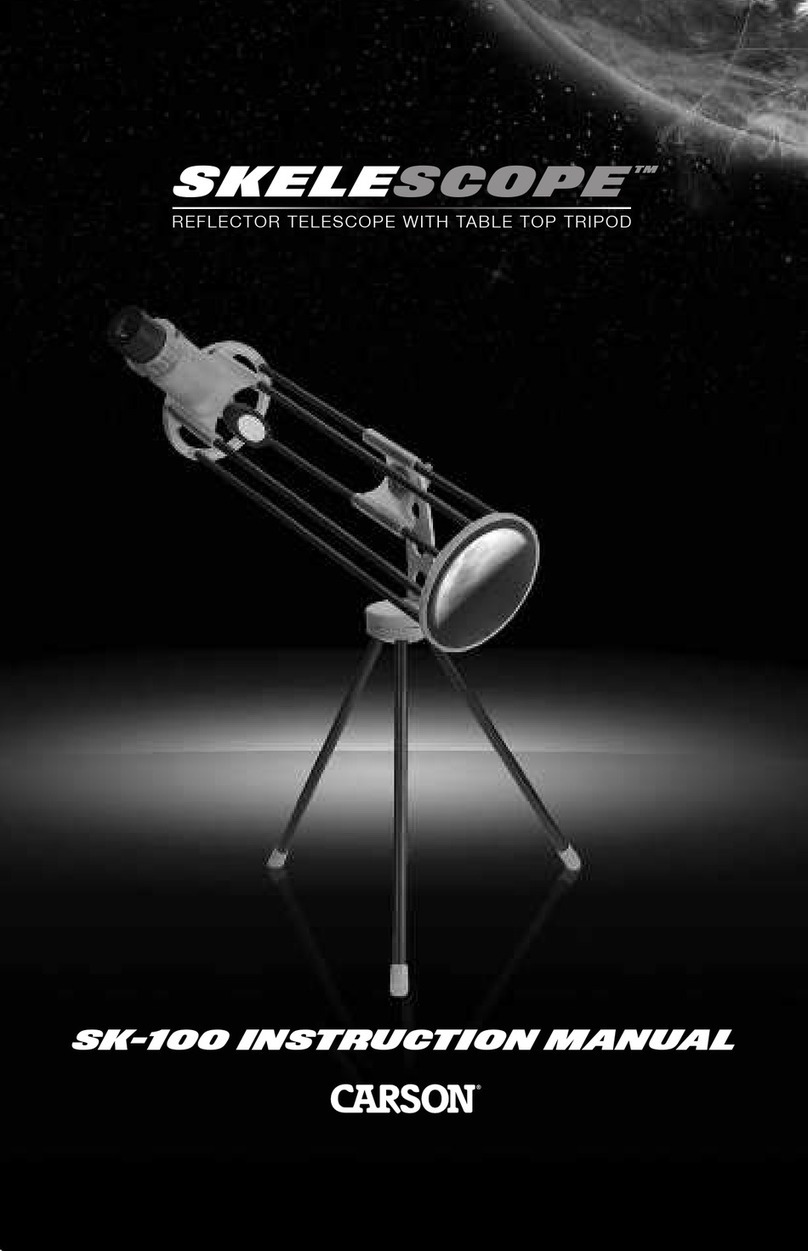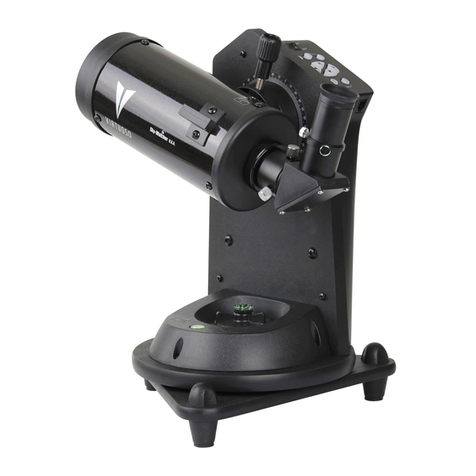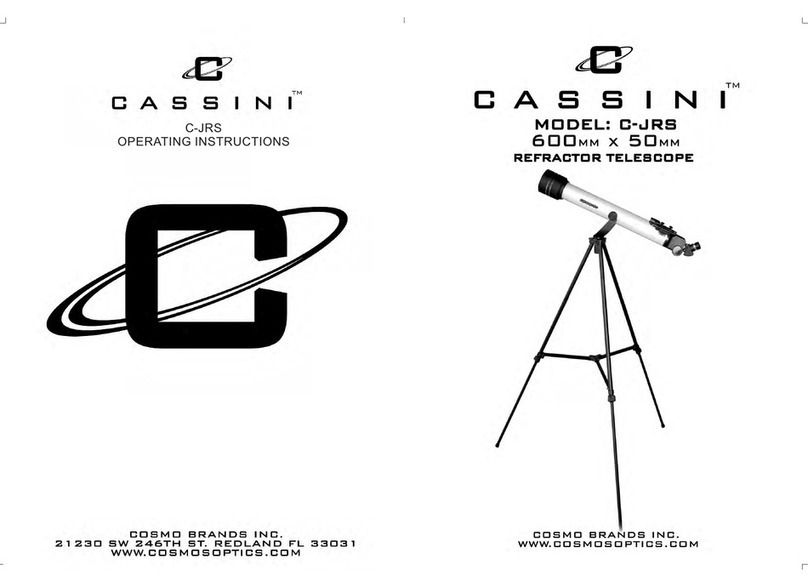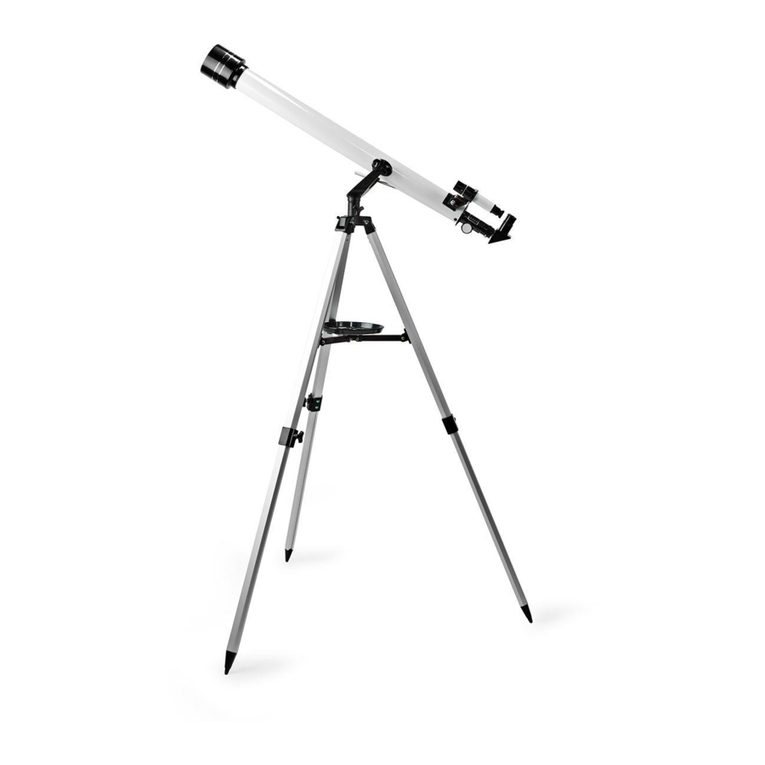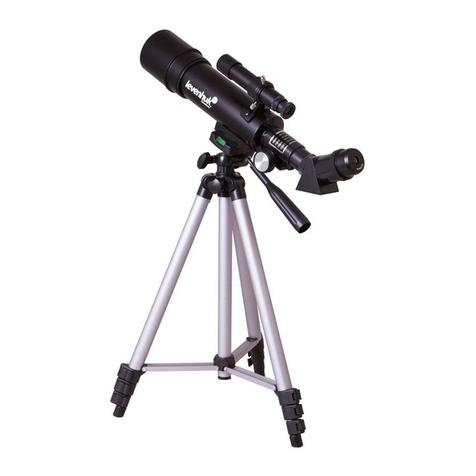
9
For azimuth motion, the top baseplate moves on three Teflon
bearing pads embedded in the ground baseplate.
To move the telescope, simply take hold of the navigation
knob and gently move the tube up or down and left or right
as desired. Both motions can be made simultaneously and
in a continuous manner for easy aiming. When the telescope
is pointed high in altitude, rotating the tube in azimuth can
cause the base to “tip” because of the reduced leverage. In
this case it is helpful to place your other hand on the base or
the optical tube to help “guide” the tube.
Setting the Altitude Tension Level
The telescope should move smoothly with just gentle hand
pressure. While azimuth friction is not adjustable, the altitude
friction can be adjusted to the desired level by turning the alti-
tude tension knob (Figure 10). Note that altitude tension knob
is the knob just above the IntelliScope Controller Port. The
knob on the opposite side of the base is merely a retaining
knob; it does not affect altitude tension.
Adjustable tension is a feature of the SkyQuest’s exclusive
springless CorrecTension Friction Optimization system.
CorrecTension adds just the right amount of friction to keep
the telescope tube in proper balance, even when other acces-
sories are added on, such as a barlow lens or a heavier
eyepiece.
A good way to set the altitude tension is to point the telescope at
about a 45° angle with the eyepiece and finder scope removed.
Loosen the altitude tension knob until the front of the optical
tube starts to drift upward. As it does so, tighten the tension
knob just enough to make the tube stop drifting (Figure 15).
When the eyepiece and finder scope are replaced, the motion
should be ideal -- not too stiff, not too loose.
You will want to be able to “track” the motion of celestial
objects while viewing them by making small movements of
the telescope without experiencing jerking (too much tension)
or overshooting of the desired position (too little tension).
Focusing the Telescope
With the 25mm Sirius Plössl eyepiece in the focuser and
secured with the thumbscrew(s), move the telescope so the
front (open) end is pointing in the general direction of an
object at least 1/4-mile away. Now, with your fingers, slowly
rotate one of the focusing knobs until the object comes into
sharp focus. Go a little bit beyond sharp focus until the image
just starts to blur again, then reverse the rotation of the knob,
just to make sure you've hit the exact focus point.
If you have trouble focusing, rotate the focusing knob so the
drawtube is in as far as it will go. Now look through the eyepiece
while slowly rotating the focusing knob in the opposite direc-
tion.You should soon see the point at which focus is reached.
For XT8 and XT10 models, the focus lock thumb screw on
the bottom of the focuser body (Figure 13a) will lock the
focuser drawtube in place once the telescope is properly
focused. The XT6’s focus lock thumb screw is located on the
top of the focuser body (Figure 13b. Before focusing, remem-
ber to first loosen the focus lock thumb screw. Do not loosen
the thumb screw too much as there must be some tension to
keep the drawtube secure within the focuser.
If you find the drawtube tension when focusing is either too
tight (focus knob is difficult to turn) or too loose (image shifts
when focusing or drawtube moves inward by itself), the ten-
sion can be adjusted for optimal performance. On the XT8
and XT10, the focusing tension adjustment set screw is a
3mm socket head set screw located below the focus lock
thumb screw (Figure 13a). A 3mm hex key is required for
adjustment of focus tension. On the XT6, the focusing ten-
sion adjustment set screws are the two small set screws
located on either side of the focus lock thumb screw (Figure
13b). A 1.5mm hex key is required to adjust the focus tension
on the XT6. Due to the rack-and-pinion focuser design on the
XT6, tension adjustment should not normally be needed as it
has been pre-adjusted at the factory.
Viewing with Eyeglasses
If you wear eyeglasses, you may be able to keep them on
while you observe, if your eyepieces have enough eye relief
to allow you to see the whole field of view. You can try this by
looking through the eyepiece first with your glasses on and
then with them off, and see if the glasses restrict the view
to only a portion of the full field. If they do, you can easily
observe with your glasses off by just refocusing the telescope
the needed amount. If you suffer from severe astigmatism,
however, you may find images noticeably sharper with your
glasses on.
Aligning the Finder Scope
The finder scope must be aligned accurately with the tele-
scope for proper use. To align it, first aim the main telescope
in the general direction of an object at least 1/4-mile away
- the top of a telephone pole, a chimney, etc. Position that
object in the center of the telescope’s eyepiece.
The finder scope uses a spring-loaded bracket that makes
alignment of the finderscope very easy. As you turn either of
Figure 15. Adjust the tensioning knob until the altitude balance is
just right. The telescope should move easily in altitude without drifting
when you let go.
